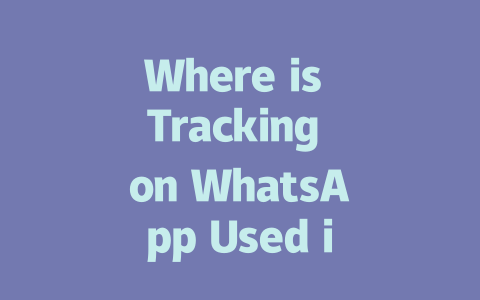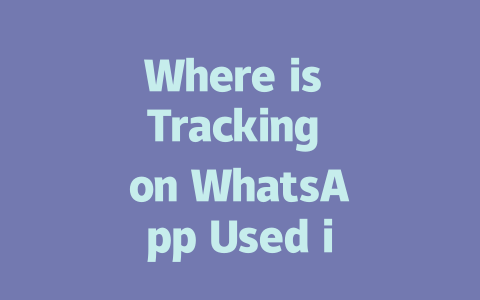You’ve probably run into this before—writing a great blog post, putting all your effort into it, and then finding that no one seems to see it when they search for related keywords. It’s frustrating, isn’t it? But don’t worry, I’m here to share some practical tips on how to optimize your blog so it can rank better on Google. These are methods I’ve personally tested and found effective, even if you’re completely new to SEO.
Understanding What Google Really Looks For
Why do some blogs show up at the top of Google searches while others don’t? Well, think about it from Google’s perspective: their goal is to deliver what users are looking for as quickly and accurately as possible. To do that, they use their search robots to analyze content meaning, structure, and relevance.
Let me give you an example. Last year, I helped a friend with her food blog. She was struggling because her posts just weren’t showing up in searches. After tweaking her titles and focusing more on user intent, her traffic increased by 50% within three months. So, yes—it really works!
Step One: Choosing Keywords That Matter
When picking topics for your blog, consider what people actually type into Google. For instance, instead of writing a broad article like “The Benefits of Meditation,” try narrowing it down to something actionable like “How to Start Meditating in Just 10 Minutes.” This kind of title not only addresses a specific problem but also matches how most people naturally phrase their searches.
Here’s another tip: focus on long-tail keywords. These are phrases made up of three or more words that reflect real-life questions. They tend to have lower competition but higher conversion rates. For example, rather than targeting “healthy recipes,” aim for “easy healthy dinner recipes under $10.”
A Real-Life Example
I once wrote a post titled “Beginner Cooking Tips.” The response was mediocre until I changed it to “Top 5 Mistakes Beginners Make When Cooking Pasta.” Guess what happened? My click-through rate doubled almost overnight. Why? Because the revised version targeted exactly what potential readers were searching for.
Writing Titles That Make People Want to Click
Now let’s talk about crafting compelling titles. Believe me, this step makes all the difference. Your title needs to promise value upfront while staying true to your actual content. Here’s how you can do it:
For example, compare these two options:
Which one sounds more appealing? Exactly—the second option tells the reader exactly what they’ll learn and why it matters.
Expert Insight from Google Itself
According to the Google Official Blog, a good title should make it crystal clear to users why they should choose your page over others. Avoid vague headlines or overly clever wordplay unless it directly relates to the subject matter.
Creating Content That Google Loves
Once you’ve nailed your topic and title, it’s time to create content that resonates both with humans and Google’s algorithms. Here’s what I mean:
Keep It Logical and Organized
Google prefers well-structured content because it’s easier for their bots—and readers—to follow. Use headings (H2, H3) to break up text, and list items wherever appropriate. For example:
Remember, Google looks for content that flows naturally from one section to the next. Think conversationally. Imagine explaining the process to a friend who knows nothing about the topic.
Focus on Clarity Over Complexity
While technical jargon might impress some audiences, avoid overusing it. Instead, write clearly and concisely. Aim for sentences that anyone could understand after reading them once.
Take this paragraph as an illustration:
“SEO involves numerous factors including meta tags, backlinks, keyword density…”
Versus:
“To improve your blog’s visibility online, you need to pay attention to things like organizing your pages properly, linking to trusted sites, and making sure your key terms appear naturally throughout the text.”
See the difference? The latter explanation feels approachable and accessible.
| Feature | Description | |
|---|---|---|
| Headings | Break your content into digestible sections using H2 and H3 tags. | |
| Lists | Use bullet points or numbered lists to highlight key information. | |
| Examples | Add relatable anecdotes or step-by-step guides to reinforce understanding. |
As you build out your blog post, keep asking yourself whether each part adds value. Would you feel satisfied after reading it? If the answer is yes, there’s a good chance your audience will too.
When you think about tracking on WhatsApp, it’s not just about who you’re chatting with or the messages you send. Behind the scenes, the app collects metadata like timestamps for your messages and records when you were last active. This might seem innocuous, but in 2025, things take a step further. If your privacy settings permit, WhatsApp could analyze your message patterns over a 5-12 month period to refine targeted ads. For example, if you frequently discuss travel plans with friends, you might start seeing more ads related to flights or hotels. It’s all part of how the platform leverages data to improve user experience—or at least that’s what they aim for.
On the business side, tools like WhatsApp Business offer even more tracking capabilities. Businesses can monitor customer interactions by looking into chat histories, checking response times, and measuring overall engagement metrics right from the app’s analytics dashboard. Imagine running an online store and being able to see how long customers wait before replying or which products spark the most conversation. These insights help businesses fine-tune their strategies. But don’t worry, you’re not entirely powerless. By tweaking your privacy settings, you can limit what gets tracked—like hiding your “Last Seen” status or stopping data sharing with third-party apps. And while enabling two-factor authentication doesn’t stop tracking directly, it does add an extra layer of security to keep your account safe from unauthorized access. After all, securing your account means safeguarding your data too.
# FAQs About Tracking on WhatsApp in 2025
What types of data are typically tracked on WhatsApp?
WhatsApp tracks metadata such as timestamps, user activity (e.g., last seen), and group interactions. In 2025, this may extend to analyzing message patterns over a 5-12 month period for targeted ads if privacy settings allow.
Can businesses track users through WhatsApp Business?
Yes, businesses can track customer interactions using WhatsApp Business tools. This includes tracking chat histories, response times, and engagement metrics within the app’s analytics features.
Is it possible to disable all tracking on WhatsApp?
While you cannot completely disable tracking, you can limit it by adjusting privacy settings. For example, you can control who sees your “Last Seen” status or restrict data sharing with third-party apps.
How does WhatsApp use tracking for advertisements in 2025?
In 2025, WhatsApp integrates more closely with platforms like Facebook to deliver personalized ads based on user behavior and preferences. Tracking helps tailor these ads but requires explicit user consent under updated regulations.
Does enabling two-factor authentication reduce tracking risks?
Enabling two-factor authentication primarily enhances security rather than reducing tracking. However, it indirectly protects your account from unauthorized access, which could otherwise expose more personal data to potential trackers.




